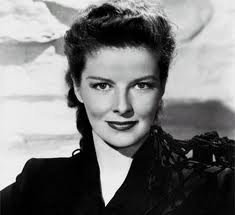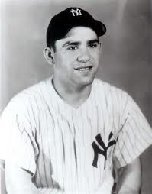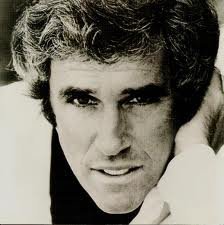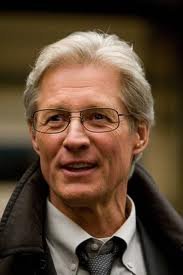
History
Ancient hairdressing
Hairdressing as an occupation dates back thousands of years. both Aristophanes and Homer, Greek writers, mention hairdressing in their writings. Many Africans believed that hair is a method to communicate with the Divine Being. It is the highest part of the body and therefore the closest to the divine. Because of this Hairdressers held a prominent role in African communities. The status of hairdressing encouraged many to develop their skills, and close relationships were built between hairdressers and their clients. Hours would be spent washing, combing, oiling, styling and ornamenting their hair. Men would work specifically on men, and women on other women. Before a master hairdresser died, they would give their combs and tools to a chosen successor during a special ceremony.
In ancient Egypt, hairdressers had specially decorated cases to hold their tools, including lotions, scissors and styling materials. Barbers also worked as hairdressers, and wealthy men often had personal barbers within their home. With the standard of wig wearing within the culture, wig makers were also trained as hairdressers. In ancient Rome and Greece household slaves and servants took on the role of hairdressers, including dyeing and shaving. Men who did not have their own private hair or shaving services would visit the local barbershop. Women had their hair maintained and groomed at their homes. Historical documentation is lacking regarding hairstylists from the 5th century until the 14th century. Hair care service grew in demand after a papal decree in 1092 demanded that all Roman Catholic clergymen remove their facial hair.
Some hairstylists specialize in particular services, such as colorists, who specialize in coloring hair.
United States
Occupationally, hairdressing is expected to grow faster than the average for all other occupations, at 20%. A state license is required for hairdressers to practice, with qualifications varying from state to state. Generally a person interested in hairdressing must have a high school diploma or GED, be at least 16 years of age, and have graduated from a state-licensed barber or cosmetology school. Full-time programs often last 9 months or more, leading to an associate degree. After students graduate from a program, they take a state licensing exam, which often consists of a written test, and a practical test of styling or an oral exam. Hairdressers must pay for licenses, and occasionally licenses must be renewed. Some states allow hairdressers to work without obtaining a new license, while others require a new license. About 44% of hairdressers are self-employed, often putting in 40-hour work weeks, and even longer among the self-employed. In 2008, 29% of hairstylists worked part-time, and 14% had variable schedules. As of 2008, people working as hairdressers totaled about 630,700, with a projected increase to 757,700 by 2018.
Occupational Health Hazards
Like many occupations, hairdressing is associated with potential health hazards stemming from the products workers use on the job as well as the environment they work in. Exposure risks are highly variable throughout the profession due to differences in the physical workspace, such as use of proper ventilation, as well as individual exposures to various chemicals throughout one’s career. Hairdressers encounter a variety of chemicals on the job due to handling products such as shampoos, conditioners, sprays, chemical straighteners, permanent curling agents, bleaching agents, and dyes. While the U.S. Food and Drug Administration does hold certain guidelines over cosmetic products, such as proper labeling and provisions against adulteration, the FDA does not require approval of products prior to being sold to the public. This leaves opportunity for variations in product formulation, which can make occupational exposure evaluation challenging. However, there are certain chemicals that are commonly found in products used in hair salons and have been the subject of various occupational hazard studies.
Contact dermatitis is a common dermatological diagnosis affecting hairdressers. Allergen sensitization has been considered the main cause for most cases of contact dermatitis in hairdressers, as products such as hair dyes and bleaches, as well as permanent curling agents contain chemicals that are known sensitizers. Hairdressers also spend a significant amount of time engaging in wet work with their hands being directly immersed in water or by handling of wet hair and tools. Overtime, this type of work has also been implicated in increased rate of irritant dermatitis among hairdressers due to damage of the skins natural protective barrier.
- 1 pound ground beef
- 1 (10-3/4-ounce) can condensed tomato soup
- 1 cup salsa
- 1/2 cup milk
- 6 (6- to 8-inch) flour or corn tortillas, cut into 1-inch pieces
- 1 cup shredded Cheddar cheese, divided
- Preheat oven to 400º. Coat a 2-quart baking dish with cooking spray.
- In a large skillet, brown ground beef over medium-high heat, stirring until crumbled; drain. Stir in soup, salsa, milk, tortillas, and 1/2 cup cheese; spoon into prepared baking dish.
- Cover and bake 30 minutes, or until hot. Sprinkle with remaining 1/2 cup cheese, and serve.
Daylight Saving Time begins on the second Sunday in March in the USA. The practice gives people an extra hour of sunlight in the evening by setting the clock ahead one hour on a predetermined date each year.
The practice of Daylight Saving Time (DST) advances clocks during the summer months. It causes us to lose an hour for one day. However, the practice allows people to get up earlier in the morning and experience more daylight in the evening. Typically, users of DST adjust clocks forward one hour near the start of spring. Then, they change them back again in the autumn.
The system has received both advocacy and criticism. Setting clocks forward benefits retail business, sports, and other activities by exploiting sunlight after working hours. However, the practice causes problems for evening entertainment and other activities tied to the sun or darkness. For example, farming and fireworks shows are both affected.
Although some early proponents of DST aimed to reduce the evening use of incandescent lighting, usage patterns differ greatly. Additionally, research about how DST currently affects energy use is limited or contradictory.
Problems sometimes caused by DST clock shifts include:
- Complicating timekeeping.
- Disrupting meetings, travel, billing, record keeping, medical devices, heavy equipment
- Impacting sleep patterns
Software often adjusts computer clocks automatically, but this can be limited and error-prone. In addition, programming is particularly problematic when various jurisdictions change the dates and timings of DST changes.
HOW TO OBSERVE
- Besides adjusting our clocks, it’s important to adjust our sleep schedules, too. Many of us go into the time change sleep deprived. Don’t do this during Daylight Saving weekend.
- Start preparing your body and anyone in your household for an earlier bedtime.
- That includes pets. Their potty and feeding schedules will need to be adjusted, too. Start a few days before if at all possible.
- In the end, you and your entire household will be able to benefit from the additional sunlight in the evenings by enjoying outdoor activities without feeling the drag of lack of sleep.
- Another way to celebrate the day might include writing your representatives in Congress. According to the National Congress of State Legislatures, nearly every state has tackled the issue of daylight saving time and whether to end it or not. Even at a federal level, the issue has been brought to the table a time or two.
- Of course, most importantly, be sure to turn your clocks ahead.
-
DAYLIGHT SAVING TIME HISTORY
-
George Vernon Hudson from New Zealand proposed the modern version of daylight saving in 1895. Germany and Austria-Hungary were the first countries to use it starting on 30 April 1916.
The energy crisis in the 1970s accelerated the growth of Daylight Saving Time. It has been argued that more natural light in the evening hours uses less electricity due to less artificial lighting requirements. As a result, many retail shops and tourist attractions also enjoy more business.




















1 comment:
Happiest Daylight savings to you):-
Thank you for my morning read.
Post a Comment